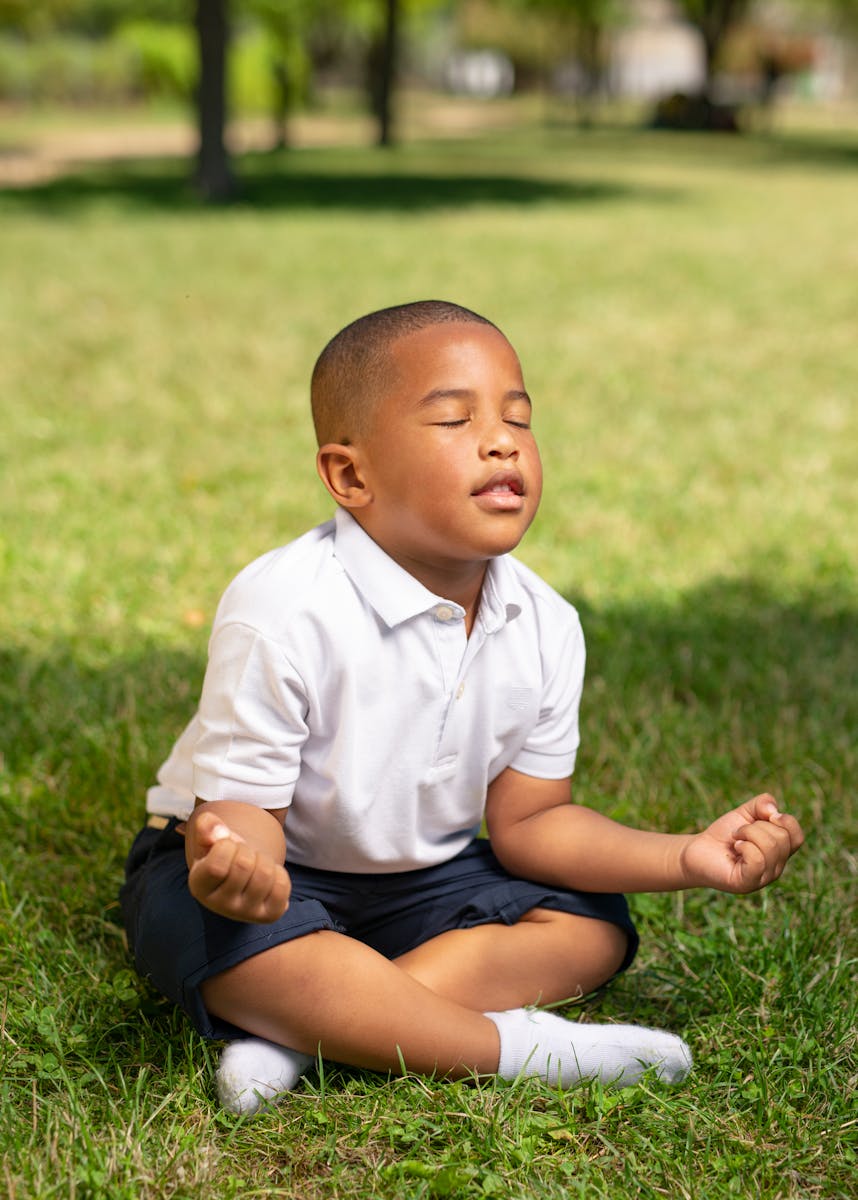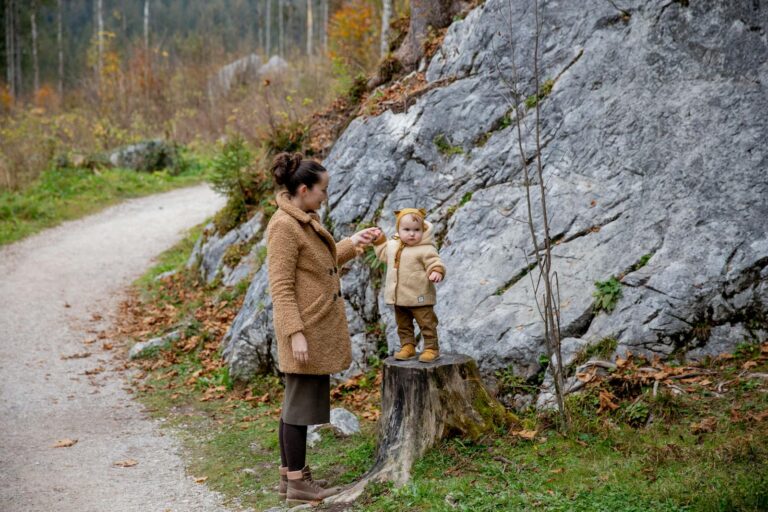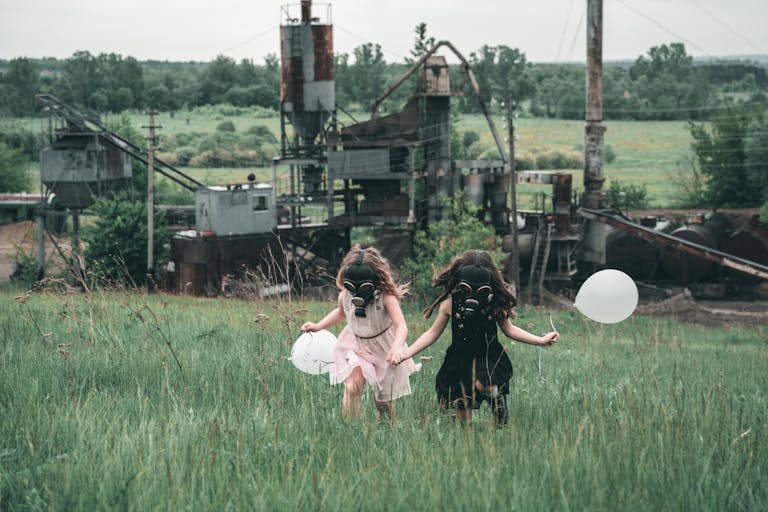Nature Heals: How Nature Time Supports Mental Health for Kids
Let me tell you a personal story.
After my daughter was born, I went back to work full time when she was 3 months old. I was back to seeing patients, pumping, doing daycare pick up, then not too long after, bedtime routine and the frequent night wake ups. I was exhausted going through each day on repeat. I had such an identity crisis.
On paper, I had finished my medical residency and was now a full fledged physician and our family was just getting started. But inside, I was on the struggle bus.
Who am I anymore? Is this what the rest of life is going to be like? A series of repeat days, just trying to make it to an unrestful night of sleep then starting over? There’s a term called “matrescence,” which at the time I had not heard about.
According to the cambridge dictionary:
Matrescence is “the process of becoming a mother.”
This includes all the physical, psychological, and emotional changes that a new mom goes through after the birth of their child.
My mind felt like it was constantly confused. I journaled like crazy, worked with a life coach, worked with a therapist to help sort through what was going on inside my head.
Right around that time was when we also started easing back into hiking as a family, our little one in a front carrier. Little hikes, just enough to see if I was fit enough to still do it.
I’d like to say that with that first hike, I had that clouds-parting, sun-in-your-face, light bulb moment of clarity but it took many many months to slowly find my way back to myself. But with each trail, each garden experiment, each neighborhood walk, each playground, nature was the teacher and healer that I needed.
May is Mental Health Awareness Month.
And in this modern world, our mental health is struggling. So let nature be your guide in supporting your own mental and emotional health as a parent, but also in supporting the mental and emotional health in your children, from infancy through adulthood.
The Mental Health Crisis in Children
In 2021, the American Academy of Pediatrics, American Academy of Child and Adolescent Psychiatry, and Children’s Hospital Association declared a National State of Emergency in Children’s Mental Health.The COVID pandemic played a role but the rates of mental health concerns and suicide in children and teens were already rising the decade prior.
I see it in my clinic. It is not infrequent, unfortunately, when adolescents are screened for depression, that their scores are extremely high. I am fortunate that there is a fairly robust behavioral health program where I practice but this is not the case in many other health systems.
In 2021, more than 1 in 3 (37%) of high school students reported poor mental health during the COVID-19 pandemic. Additional studies from 2021-2023 showed that nearly 1 in 5 (19.2%) of teens struggle with depression. Some teens are really good at hiding any mental health challenges due to cultural stigma surrounding mental health from their parents, let alone their pediatrician, that they might not get the care that they really need.
A child or teen who struggles with their own mental health can also struggle with their own self confidence, their relationship with those around them including classmates, parents, siblings.
While many parents do their best to shield kids from what stresses them, kids are insightful. Things happening in the world like rising cost of living, financial stressors, social policies, and climate change to name a few inevitably trickle down.
In school settings, increased academic pressures, and the reduction of recess time, outdoor play, and music and arts education to promote creativity have also led to a more stressed out youth.
And finally, technology including screen time and social media has led to increased social isolation contributing to a phone-based childhood that has worsened the level of anxiety among children and teens. Jonathan Haidt’s book, The Anxious Generation, is an excellent read and one that I recommend regarding the role of technology on kids’ mental health.
What Nature Does for Your Child’s Mental & Emotional Health
So now that we know that many kids and teens are struggling with their mental health, how does getting out in nature help?
Take a moment to reflect on your personal experiences. Think of a busy and stressful moment. What helped you during that time. Did nature play a role? Was it getting outside that helped? Or looking out the window? How did it feel?
Now think about a moment when your child was struggling. Maybe it was a series of tantrums. Maybe it was being the new kid in school? Maybe it was all the final projects and tests. What helped them get through it? Did nature play a role?
Science shows that time in nature is linked to less stress, improved mood, improved focus, and improved emotional regulation. Time in nature is good for our mental health.
Less Stress
Time in nature is linked to less stress. For kids, having more outside recess and green schoolyards help them to feel more calm, more positive, and more resilient. For parents, being in nature can help reduce parental stress, with this study looking at the stress hormone, cortisol, among parents who were given a prescription to visit the park. And healthier happier parents means healthier happier kids.
And when there is a stressful situation, being in a natural environment helps you and your child recover faster. To help you feel more restored, improving resilience if a stressful situation comes around again.
Improve Mood
Outdoor time is also good for our mood and linked to less depression and anxiety symptoms. As mentioned above, rates of depression and anxiety symptoms are increasing. Time in nature can help with feelings of sadness, worry, tiredness, and guilt that are all linked to overall mood.
In Japan, studies about Shinrin-yoku, or Forest Bathing, have shown an increase in the neurotransmitter, serotonin, which is a common target of antidepressant medications.
Improved Focus
In the classroom, time in nature is linked to improve focus and better learning. It is linked to less Attention Deficit and Hyperactivity Disorder (ADHD) symptoms. This is especially important in school settings where children need outside play and outdoor recess and lunch breaks in order to do well in the classroom. For neurodivergent kids, this may be especially important to help them learn.
This is not just for elementary school kids but for teenagers and all adults as well. Maybe even more important given the additional stressors and responsibilities that come with growing up.
Imagine yourself sitting in an office cubicle for 8 hours a day needing to stay focused. Perhaps that’s already part of your job. How do you feel during those days that you stay indoors? How about the days that you manage to step outside?
I know that I definitely start getting antsy if I’m stuck indoors for long periods of time. And when I’m feeling particularly distracted or pulled in multiple directions, it is even more important to get outside instead of pushing through the work.
Improved Emotional Regulation
Time in nature is also linked to improved emotional regulation, a process by which individuals influence what emotions they have, when they have them, and how they experience and express them.
This means how do we or our kids respond to feelings of anger, frustration, sadness. Think arguments, power struggles, tantrums.
Being in nature encourages mindfulness, joy, happiness, and nature connectedness. It is also linked to improved impulse control.
Taking Action
Of the many many benefits of being in nature, I find that time outside has the biggest impact on my own mood and emotional well-being. I know that if I do not get the chance to go outside due to demands of everyday life and busyness of work, that I am grumpy, cranky, and short with those around me.
So after reading this, schedule some time for yourself and your family to connect with nature. Nature time can come in so many different ways, from playgrounds, forests, state and regional parks to backyards, windowsill gardens, office plants, or a view of the sky.
- What are some ways that your family likes to do outdoors?
- What are some ways to incorporate mini outdoor breaks into your family’s daily routine?
- If you are in an office cubicle, what are some ways to incorporate some nature into that space? Think office greenery with plants, nature inspired items, nature inspired art or natural landscapes.
You may find that the more time your family spends outdoors together, the more connected you may feel with one another.
Additionally, not all families have safe access to nature. Supporting mental health for all people and all kids also includes advocating for safe programs and spaces that bring families closer to nature.
👉🏼 Share what ways nature supports your mental health.
If you, your child, or someone you know is suffering from a mental health condition, there are a number of free resources that you can access. And please don’t wait. Ask for help.
- 988 Suicide & Crisis Lifeline
- National Alliance on Mental Illness (NAMI)
- Mental Health Resources from the American Academy of Pediatrics
- Your or your child’s healthcare provider
Getting out in nature in small or big ways can make a difference for your and your child’s health and well-being. As we connect with nature for our mental health, we are more likely to care for it and teach our kids to do the same.
Remember: This post is for informational purposes only and may not be the best fit for you and your personal situation. It shall not be construed as medical advice. The information and education provided here is not intended or implied to supplement or replace professional medical treatment, advice, and/or diagnosis. Always check with your own physician or medical professional before trying or implementing any information read here.







